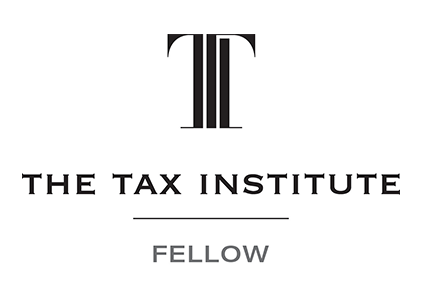
When calculating a super benefit, it is necessary to identify and determine the value of the various components that make up the benefit. The law around superannuation dictates that the tax-free component and taxable components of a member’s payment must be paid in the same proportion as the tax-free and taxable components of the member’s interest. This requirement is known as the proportioning rule.
Think of the proportioning rule as a sort of integrity measure that prevents the “cherry picking” of the tax-free and taxable components when a payment is made from superannuation.
The tax-free component includes the contributions segment and the crystallised segment. The contributions segment generally includes all contributions made after 30 June 2007 that have not been, and will not be, included in your fund’s assessable income.
The contributions segment is made up of what is commonly known as non-concessional contributions (and also includes the CGT exempt component, superannuation co-contribution benefits, and contribution splitting benefits). The crystallised segment broadly includes numerous tax-free components that existed prior to 30 June 2007 and are becoming increasingly uncommon.
The taxable component is broadly the total value of the member’s superannuation interest less the value of the tax-free component. Contributions that would form part of the taxable component are generally amounts included in the assessable income of the fund. Broadly, the taxable component consists of concessional contributions, earnings, and capital appreciation from investments in the fund.
Calculating the components
The value of the superannuation interest and the amount of tax-free and taxable components of the member’s interest is determined as follows:
- Determine whether the benefit is a lump sum or a pension.
- Work out the total value of the superannuation interest and the proportion of tax-free and taxable components as at the applicable time, which means:
- if the benefit is a lump sum — just before the benefit is paid; or
- if the benefit is a pension — on the date the pension commences (in other words, you lock in the proportion of the tax-free and taxable components on the date the pension commences, and future growth and earnings are shared proportionally between these components.)
- Apply the same proportions to the amount of benefit paid (this part is the essence of the proportioning rule).
When a pension is commenced
In an accumulation interest, the tax-free component is normally comprised of a static amount (that is, the crystallised segment and the contributions segment). Whereas the taxable component can change regularly as the investments supporting the superannuation interest fluctuate with investment markets and earnings (or losses) accrue, in some cases on a daily basis.
However, when a pension is commenced with a certain proportion of a tax-free component and the pension assets increase over time, the tax-free component will effectively grow. This is because at the time of paying pension benefits, the proportioning rule will use the same proportion of tax-free component that was locked in at the commencement of that pension.
To illustrate how the proportioning rule works in practice, in respect of pensions, look at the following example:
In January 2017, Christopher is 66 years old, still working and is a member of an SMSF. In his SMSF, Christopher’s superannuation interest consists of a tax-free component of $300,000 and a taxable component of $200,000. His total superannuation balance is $500,000. This means the proportion of his superannuation interest that consists of the tax-free component is 60% and the taxable component is 40%.
Christopher commences an account-based pension with just $250,000 of his total superannuation interest. At the commencement of this pension, the tax-free component is $150,000 (or 60%) and the taxable component is $100,000 (or 40%) since his total superannuation interest before commencing the pension was 60% tax-free component and 40% taxable component.
If the value of the assets supporting the pension were to rise, the percentages representing the tax-free and taxable components do not change. Thus if Christopher’s pension balance, which started at $250,000, were to rise to $400,000 after three years due to his savvy investment decisions, his tax-free and taxable components would retain the same proportion as at the pension’s commencement and will be as follows: a tax-free component of $240,000 (or 60%) and a taxable component of $160,000 (or 40%).
Of course, if the value of the assets supporting the pension were to fall to say $100,000, then the proportion of the tax-free and taxable components will remain the same as at commencement ($60,000 tax-free and $40,000 taxable).
Accordingly, the following general rules should be noted:
- Where assets are going to increase in value, the tax-free component is maximised by commencing a pension sooner rather than later (locking in the tax-free component to grow proportionately).
- Where assets are going to decrease in value, the tax-free component is maximised by commencing a pension later rather than sooner (allowing the decrease in assets to erode the taxable component).
With an accumulation interest
To illustrate further the above general principles about the proportioning rule, consider the following further example:
Again the same facts as above, but this time let us focus on Christopher’s accumulation interest. Recall that he commenced his pension with $250,000 of his total superannuation interest; he therefore has $250,000 remaining in his accumulation interest. That $250,000 in accumulation would comprise of a tax-free component of $150,000 (or 60%) and the taxable component is $100,000 (or 40%). Like his pension interest, the value of his accumulation interest rises to $400,000 after three years due to his savvy investment decisions. Unlike his pension interest, his tax-free component remains static and the proportion of his taxable component increases. Christopher’s tax-free and taxable components in respect of his accumulation interest are now as follows: a tax-free component of $150,000 (or 37.5%) and a taxable component of $250,000 (or 62.5%).
As the above example shows, there is no change to the tax-free component if investments in the accumulation interest increase in value. Hence, the decision to commence a pension with some or all of a member’s benefits at the right time can make a significant difference to a member’s interest over the course of time.
Strategic importance
A sound understanding of the proportioning rule is important as it forms the basis of many strategies that leverage off it. For example, where there is a significant tax-free component, the pension should generally be commenced as soon as practicable for a member where the fund expects to see some growth in the value of its assets. Further, when a member is contributing or rolling back a pension into accumulation, stay alert to the effect on what will happen to the tax-free and taxable components — since these two components cannot be separated to maximise each member’s position once these amounts are mixed together.
Tax Store Accountants Sunnybank.
Our Management Credentials




